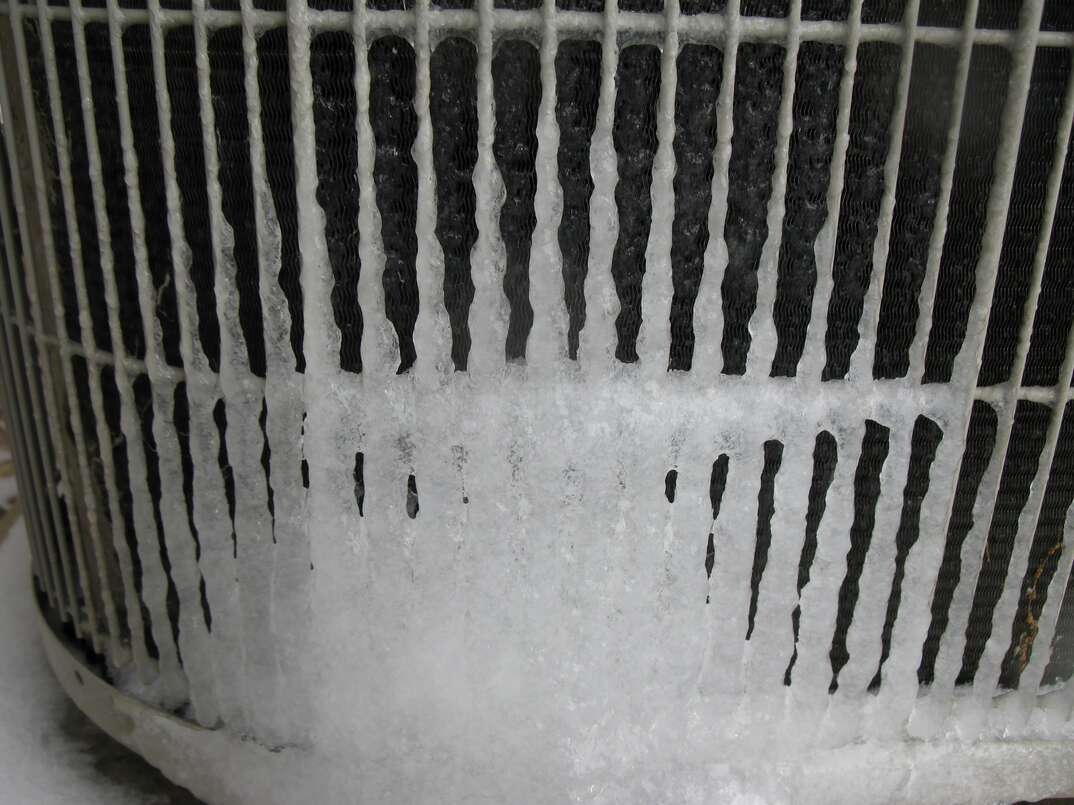We have encountered this great article about Air Conditioner Frozen? How To Fix your Frozen AC Line down the page on the net and think it made good sense to discuss it with you on this site.

Introduction
Finding that your AC pipeline is frozen can be worrying, especially throughout warm summer months when you rely upon your a/c the most. Recognizing what to do in such a situation is vital to avoid more damage to your air conditioning system and ensure your comfort inside your home.
Comprehending the Causes
A number of variables can add to the freezing of an air conditioner pipe. Understanding these reasons can aid you attend to the issue efficiently.
Lack of Airflow
One common cause of a frozen air conditioning pipeline is inadequate air flow. When the airflow over the evaporator coil is limited, it can trigger the coil to go down below freezing temperature level, resulting in ice formation on the pipeline.
Low Refrigerant Levels
Inadequate cooling agent levels in your a/c system can likewise lead to a frozen pipeline. Reduced refrigerant degrees can trigger the pressure in the system to drop, leading to the cold of moisture on the evaporator coil.
Winter Conditions
In chillier climates, freezing temperature levels outside can add to the freezing of AC pipelines. If your AC device is not appropriately shielded or if there are leakages in the ductwork, cool air can penetrate the system, creating the pipeline to freeze.
Dirty Air Filters
Unclean or blocked air filters can limit airflow in your air conditioning system, causing different problems, consisting of an icy pipe. It's necessary to change or cleanse your air filterings system frequently to ensure appropriate airflow and protect against ice accumulation.
Indicators of a Frozen A/c Pipe
Identifying the signs of an icy air conditioning pipe is critical for punctual activity.
Minimized Airflow
If you observe a substantial reduction in air movement from your vents, it can suggest an icy pipe.
Ice Buildup on the Pipe
Visible ice build-up on the cooling agent line or the evaporator coil is a clear indication of an icy a/c pipe.
Strange Sounds from the Unit
Unusual sounds, such as hissing or bubbling, coming from your air conditioner device can signal that there's ice existing on the pipeline.
Immediate Actions to Take
When confronted with a frozen AC pipe, it's essential to act swiftly to prevent additional damage to your air conditioning system.
Switching off the air conditioner
The initial step is to turn off your air conditioner to avoid the system from running and intensifying the issue.
Looking for Blockages
Check the location around the interior unit for any blockages that might be blocking air movement, such as furniture or curtains.
Defrosting the Pipe
You can make use of mild methods like putting towels soaked in cozy water around the frozen pipe to assist thaw it gradually.
Safety nets
Taking preventive measures can aid stay clear of future incidents of an icy a/c pipeline.
When DIY Methods Fail
If your efforts to thaw the pipeline or address other issues are not successful, it's time to call in a professional.
Significance of Hiring a Professional HVAC Technician
A licensed HVAC service technician has the expertise and tools essential to detect and fix issues with your AC system securely and properly.
Normal Maintenance Checks
Schedule normal upkeep talk to an expert HVAC specialist to make certain that your AC system is running successfully.
Altering Air Filters
Frequently change or clean your air filters to stop air flow constraints and maintain optimum performance.
Protecting Exposed Pipes
If your AC pipes are subjected to cold temperature levels, consider shielding them to prevent freezing throughout winter season.
Seeking Professional Help
If DIY methods fail to settle the issue or if you're unclear about just how to continue, it's ideal to look for help from a qualified HVAC professional.
Conclusion
Taking care of an icy a/c pipe can be a discouraging experience, but understanding exactly how to respond can help minimize damages and restore convenience to your home. By recognizing the causes, acknowledging the signs, and taking timely action, you can properly attend to the problem and avoid future incidents.
What to Do If Your AC Line Is Frozen
Make Sure All Supply and Return Air Vents Are Open
If you notice problems with airflow, the first thing you should do is check your supply and return vents. Supply vents distribute clean, conditioned air throughout your home. As this air becomes stale, it’s pulled into the return vent, where it’s reconditioned before being sent back out through the supply vent.
When these vents are closed, air won’t flow in the home. Before examining your AC, check the vents in every room and ensure they’re all open.
Check for a Dirty Air Filter
Another possible cause of limited airflow is a dirty air filter. Your air conditioner’s filters catch elements you don’t want to breathe in, such as dirt and dust. Over time, filters can become clogged, ultimately blocking air from flowing in and out. The lack of airflow can then cause the entire coil to freeze and will completely restrict any air from moving through it. The AC may need to be powered off for one to two days to allow the coil to thaw after replacing the filter to allow proper functioning of the unit. This debris can also accumulate on your AC’s evaporator coil, requiring a more serious repair. In general, air filters should be cleaned regularly (about every two weeks).
Assess Your Outdoor Unit
In addition to checking your AC, assessing the outdoor unit is a good idea. Also known as the condensing unit, it works with your interior unit to release heat outside. An issue with the outdoor unit can result in rising internal temperatures.
Overgrown Shrubs or Clogged Leaves
From leaves and twigs to shrubs and debris, there’s no shortage of outdoor elements that can accumulate around your condensing unit. When these elements get lodged inside the unit, they can block airflow. Fortunately, removing the blockage can solve the problem.
Sounds of a Broken Fan
Shrubs and leaves aren’t the only things that can impede your outdoor unit’s airflow. If the fan is broken, the unit won’t be able to properly get rid of heat — which means the internal temperature won’t go down. First, make sure the fan is spinning. If it is, check for the following sounds of a broken fan:
Buzzing Rattling Screeching Hissing Clicking Preventative Measures
Nobody wants to deal with a frozen AC line. In addition to causing problems with your air conditioner, they require professional repairs. On the bright side, there are preventative measures you can take to help ensure this issue doesn’t arise in the first place.
https://www.coopergreenteam.com/blog/what-to-do-if-ac-line-frozen

As a keen person who reads on Have a Frozen AC Line? Here’s How to Fix It, I was thinking sharing that piece of content was really helpful. If you liked our blog posting if you please don't forget to pass it around. Thank you for your time. Visit us again soon.
Go Deal Now